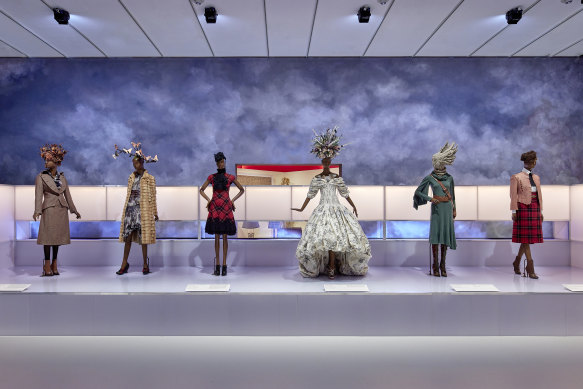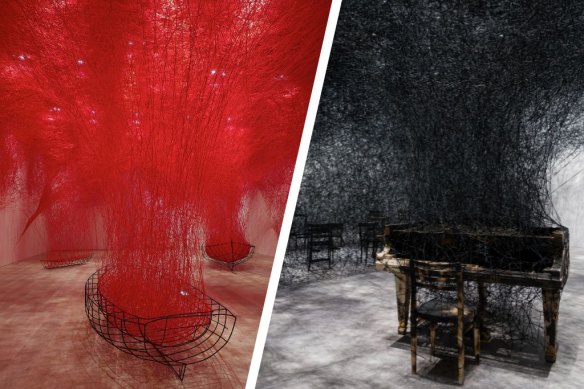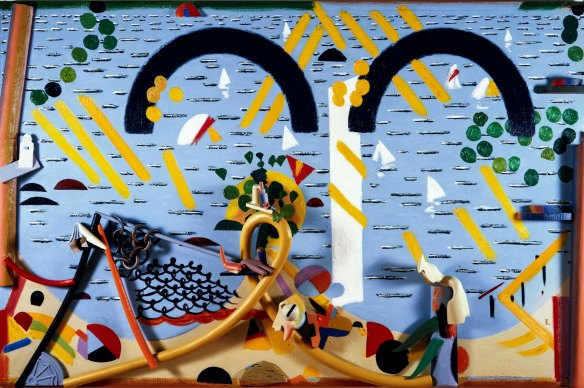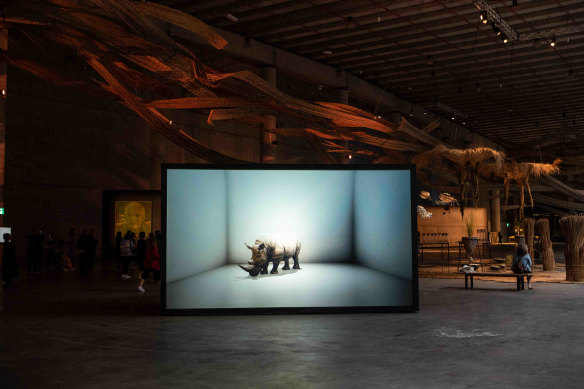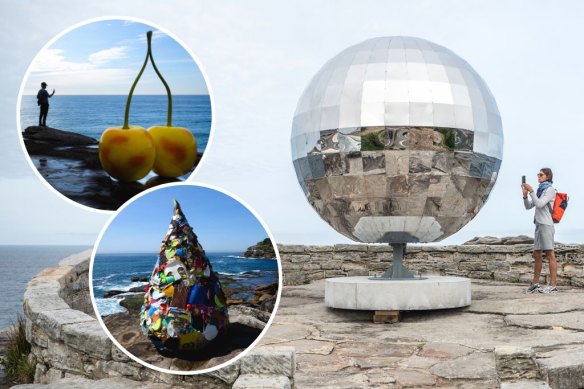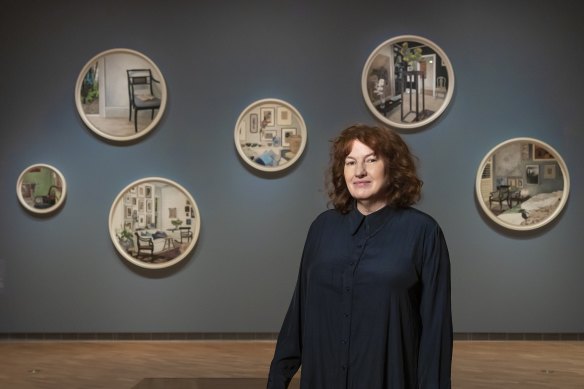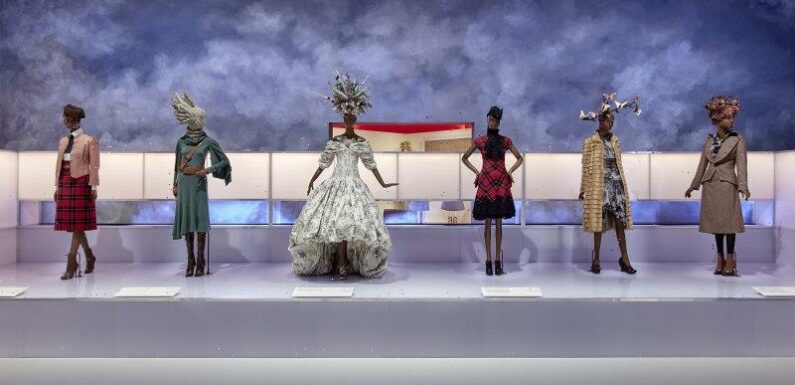
By John McDonald
There’s been plenty to think about in 2022, including war in Ukraine, a looming global recession and floods along the North Coast, but if one had to nominate Australia’s most momentous event of the year it would have to be the change of government. Whether this was equally momentous for the visual arts remains to be seen, as Labor has yet to do anything that departs significantly from its predecessor’s policies.
The first disappointment was missing the opportunity to establish a dedicated Ministry of Culture, rather than simply treating “the Arts” as a minor portfolio to be handed to a minister with other responsibilities. As Minister for Employment and Workplace Relations and Leader of the House, Tony Burke has a lot on his plate. He may have a genuine interest in the arts, but he seems to have decided that it’s easier to keep things chugging along rather than looking too closely at problems within the sector.
The terminology is important because to say “Culture” rather than “the Arts” is to recognise that creative and intellectual activity is as important to society as Health, Education, Defence, and other portfolios. Whereas “the arts” could be dismissed as a pastime or entertainment, culture, as the name suggests, has roots in the soil. It defines our very identity as a community, a society, a nation.
So much for the immaterials. Aside from an $80 million grant to help kickstart a National Aboriginal Art Gallery in Alice Springs, and $50 million for an Aboriginal Cultural Centre in Perth, there was little money for the visual arts in the October budget. According to ABC’s analysis, overall arts funding fell by $244.7 million, with notable neglect of regional arts.
Alexander McQueen: Mind, Mythos, Muse exhibition at NGV.Credit:Sean Fennessy
The big “don’t-judge-us-too-harshly” excuse is the forthcoming announcement of a National Cultural Policy, the first since Keating’s Creative Nation in 1994. The government has established five panels and an advisory group to formulate this document, which sounds like a case of too many cooks.
There were probably only two exhibitions that might be classed as international blockbusters in 2022, and they were both at the National Gallery of Victoria. The first was The Picasso Century, which found a new way of looking at the most renowned artist of the modern era; the second, the freshly opened Alexander McQueen: Mind Mythos Muse. This survey of work by the world’s most controversial fashion designer will keep the ticket office busy for the rest of the summer.
Among other international shows the stand-outs were Chiharu Shiota: The Soul Trembles at Brisbane’s Gallery of Modern Art, and Richard Mosse’s extraordinary multichannel film about the Amazon, Broken Spectre, which can be viewed at the NGV until April. The Shiota exhibition was a brave project that relied on word-of-mouth to attract local audiences who could not be expected to recognise even the best-known contemporary Japanese artist. It was also an elaborate set-up that required huge skill and commitment.
Chiharu Shiota: The Soul Trembles at QAGOMA Gallery of Modern Art.Credit:QAGOMA / Natasha Harth
In Sydney, the Art Gallery of NSW’s Matisse: Life and Spirit exhibition lingered until March, although I found it hard to get excited about yet another package from a foreign museum. The saving grace was that the artist was one of such towering stature. For most of the year, the AGNSW was counting down to the Sydney Modern launch, relying on old faithfuls such as the Archibald Prize, but more about that later.
The city’s best international exhibition was the Museum of Contemporary Art’s Do Ho Suh survey, which continues until 26 February. This absorbing collection of work by one of the leading artists of our time was easily the museum’s highlight of the year.
Colin Lanceley’s Balmoral, 1984.
Other Sydney exhibitions that warranted serious attention included Shaken to His Core: Nolan’s Auschwitz at the Jewish Museum; Heart of Country, a first-rate collection of bark painting at the S.H. Ervin Gallery, and two brilliant shows at the National Art School Gallery – a retrospective of Colin Lanceley, an important artist who has been too easily overlooked since his death in 2015; and Captivate – an encyclopaedic, carnivalesque celebration of the 100th anniversary of the NAS, with extra material drawn from its pre-history as Darlinghurst Goal, from 1841-1914. The show ran for barely five weeks, but it deserved to be a permanent display.
It would be remiss not to mention the ongoing success of the White Rabbit Gallery – Judith Neilson’s private museum of contemporary Chinese art, which is drawing progressively bigger numbers. Go along almost any day and the place is swarming, which is more than can be said for most public art venues. There’s no secret to this popularity, just two high-quality shows per year, installed with verve and imagination.
By scale alone, the four biggest art events in Sydney this year were the 23rd Sydney Biennale; the Sydney Contemporary art fair; Sculpture by the Sea, and, inevitably, the Archibald Prize.
José Roca, the director of this year’s Biennale, titled Rivus, had an incredibly tricky job in putting together a large international exhibition at a time when travel was almost impossible, loans were difficult to obtain, and freight was prohibitively expensive. That he managed to assemble such a coherent display was a credit to his perseverance and desire to host a show that engaged in a meaningful way with the climate crisis.
Alexandra Daisy Ginsberg’s The Substitute as part of the Biennale of Sydney.Credit:Flavio Brancaleone
Sydney Contemporary was a huge party in which artists, dealers and collectors celebrated the return of business as usual in the galleries. The fair regathered the momentum it had pre-pandemic, which has confirmed Sydney as the capital of Australia’s commercial art market, even if Melbourne has a superior museum culture. There were many good shows in the commercial galleries this year, but if I start listing them it would be a tedious process. Suffice to say the sector looks healthy, even though there may be unsettled weather ahead.
After 25 years, Sculpture by the Sea doesn’t have anything to prove. It is a deadset crowd-pleaser, and its restoration after two years in hibernation was the signal for all of Sydney to converge on Bondi.
It seems to require only the slightest hint that the Archibald Prize is approaching, for people to get excited about a show that has long ago departed the realm of art and become a staple of local popular culture. It is the AGNSW’s only guaranteed revenue raiser of the year, and a surefire media sensation. The good news is that Blak Douglas’s portrait of Karla Dickens was, in my book at least, the obvious choice to take out the prize.
To gauge the real strength of Indigenous art today, there’s no substitute for that first week in August, when the National Aboriginal and Torres Strait Islander Art Awards are held in Darwin. This annual event allows an overview of the field, and always throws up a few surprises. The satellite shows and events are just as important, as the commercial exhibitions often provide a better indicator of emerging talent.
Highlights from Sculpture by the Sea included Joel Adler’s Lens (main), Nikita Zigura’s Global Warming (top left) and Just a Drop in the Ocean by Marina DeBris (bottom left).Credit:Flavio Brancaleone, Janie Barrett
And so, we return to the museums – and here one needs to distinguish between the art museums and institutions such as the Australian Museum and the National Museum of Australia. The former gets all the glory, but the general museums are arguably more effectively run, and more responsive to audiences. The Australian Museum has been getting record attendances, while the NMA has pursued an innovative exhibition program, both at home and abroad, with the travelling Songlines, set to be the most successful and widely viewed Australian touring show in history.
In addition, the NMA has tried valiantly to work within its allotted budget, while its neighbour in Canberra, the National Gallery of Australia, finished the year by informing the government of a $265 million shortfall. Although this is largely a matter of ongoing maintenance for a troublesome building, the NGA has sent out all the wrong messages by previously going on a spending spree, announcing that it had bought an animatronic work by American artist Jordan Wolfson for $6.8 million, and a shiny sculpture by Lindy Lee for the mind-boggling sum of $14 million – a record price for any Australian art museum, paid for an artist whose highest auction price recently stood at roughly $9,000. Since then, director Nick Mitzevich has added a sculpture by artist Tracey Emin for another million.
The gallery’s 40th-anniversary celebrations look threadbare, with the only event of any substance being the Cressida Campbell retrospective that runs until 19 February. It’s the NGA’s second major survey of an Australian artist this year, following the popular Jeffrey Smart show that ended in March. Take these two strong exhibitions out of the program and there’s little left.
Back in Sydney, 2022 is ending in a rose-coloured fog, with the long-awaited opening of Sydney Modern. After nine years of anticipation, the enthusiasm is understandable, but there should be concerns about policies that rely so heavily on the permanent collection, large-scale installations, and the pulling power of the new SANAA-designed building. Aside from another installment of the contemporary survey, The National, and the next Archibald Prize, the AGNSW has announced no new shows for 2023. At this point in a movie, we would begin to hear ominous music.
The score would be a full-on Hans Zimmer disaster symphony if we sought a soundtrack for the Powerhouse Museum, which has seen its attendances plummet this year, as new schemes for its future have multiplied. Had the NSW government decided a decade ago to invest $500,000 million in renovating the existing museum and another $500,000 in building a new art gallery for Parramatta in an appropriate location, it could have saved itself a huge amount of controversy and waste. So far, we have had 1.2 billion dollars’ worth of spin, as we watch the existing PHM being transformed into a “fashion hub” with substantially less exhibition space, while an important collection is dissipated. The conclusion of the entire project, I predict, will be an albatross of a building in Parramatta, and a venue in Ultimo that struggles to attract the same numbers as the old museum. Taxpayers will have watched about $2 billion expended for a negative outcome.
Artist Cressida Campbell at the NGA exhibiton.
If Labor comes to power, as expected, it will be faced with some gigantic problems in the arts sector: namely, what to do about the Powerhouse Museum? How many millions does it take to run Sydney Modern? And recently, how to avoid a hare-brained scheme to “monetise” the state Archives.
This leaves us with a scenario at the state level that closely resembles the one being faced by the federal government. The central requirement is to ensure the vitality and financial viability of the arts in a time of economic belt-tightening.
Inevitably, governments will look to the private sector to pick up the excess, but there is only so much that private and corporate philanthropy will do if the relevant venues are not already attracting large audiences. The dilemma is that museums all over the country have become so focused on issues of social justice and identity they have assumed the public shares these fixations and will keep turning up, which would run counter to established patterns.
Although viewers may be gradually evolving a more enlightened attitude towards different forms of art, the ongoing popularity of the Archibald Prize suggests that glitz, glamour and perhaps habit play a large role in museum visitation. In retrospect, 2022 might look like the year when we put a new set of cards on the table. In 2023, we’ll see if anyone picks them up.
To read more from Spectrum, visit our page here.
A cultural guide to going out and loving your city. Sign up to our Culture Fix newsletter here.
Most Viewed in Culture
Source: Read Full Article
